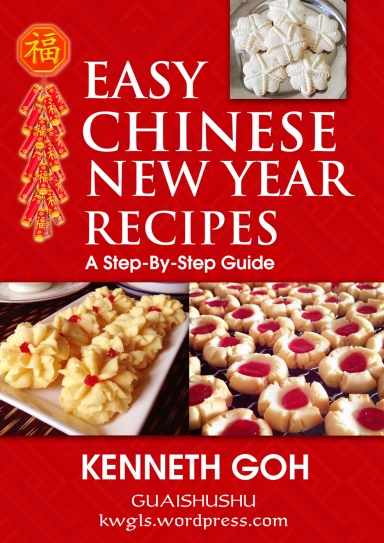Grandma Lien Tie gave birth to 9 children, 4 boys and 5 girls.
She was bought as a child bride for my grandfather, aged 20 then. She was a mere child of 4 (but sold as 5 years of age for 5 silver dollars) by her father , surnamed Tiong, related to many of the Tiongs in Sibu, in Kay Tou Puoh,in Minqin. The big age difference made it difficult for a true love match. " Your Grandfather was very taciturn, a hardworking man, stern faced but a good story teller amongst his nephews" (Quoting my uncle Lau Pang Hung.)
She grew up together with another child bride (Mrs. Lau Kah Tii) in Ban Dong,Minqing, until she was old enough to come to Sarawak with Mu Oh (this was how I called Mrs. Lau Kah Tii) or Grand Aunty. That was when she was able to work, feed chickens, cook rice and carry water. She had loved the eldest sister in law (Mother of Lau Sing Chiong), the eldest of the Lau brothers, in Fujian and often talked about her to us, how she was given extra food when food was scarce, how she was asked to sleep in the same bed as her in the cold of winter and when her clothes were thin.. She was given a lot of tasks to do but she was always bright and quick to learn, hence her eldest sister in law, then with several children. of her own, was always nice to her, giving her a lot of encouragement. She was hardly more than 5 years older than the children in the family and yet she had to wash clothes, dry them, and pick sticks and wood in the hills.
( Lau Kah Tii was No.2) and my Grandfather was No.3 in the extended family.
As a very small woman, less then 5 foot tall, she was a giant so to speak because she was very capable in making decisions, and really able to work hard. Once she was married and had children of her own, she had her kitchen. And she was very provident in getting enough food for every one. Some nephews chose to eat ("free") with her but she was generous. Her food safe was never short of food according to my mother.

She would collect nipah leaves to make rokok wrappers, tie them up in bundles and exchanged with the Malanau fishermen. She would have a whole tin of jelly fish, salted fish, in her kitchen. She had bought small amounts of salt and her rokok wrappers and tobacco and exchanged these foods with the visiting Melanaus. Thus she was able to get extra fish. She was able to spend wisely with the hard earn money from my grandfather who was a good rubber tapper.
In 1926, the year my mother was born, my grandfather had saved enough to build his own house in Ah Nang Chong, exactly opposite the big mansion belonging to his own elder brother, Lau Kah Tii in Ensurai or Wong Su Lai.
But once the family moved to Ah Nang Chong, she was in control of business of rubber tapping, engaging more tappers, managing their work, while at the same time getting her children educated and brought up in the Methodist faith. She was not a Bible woman, but she could quote Confucious and the Bible from memory. She had a great memory.
Life was not easy as she had 9 children!! We would ask how she gave birth and who delivered her babies. Women helped women she would say. That was how life was then.
Her life could be divided into parts:
a) Life as a child
b) Life as a child bride in Ban Dong
c) Life as a little in Ensurai, Sibu
d) Life as a young wife to Lau Kah Chui
e) Life as a stranded woman in China during the Japanese Occupation
f) Life as a widow
g) Life as a grandmother
h) Life as a disadvantaged visually disabled grand lady
Each part would cover pages and pages of stories if all her children and grandchildren could testify!!
Her hobbies? making quilts, sewing clothes, watching movies, visiting her daughters in Sibu,Kuching and Sarikei and making Chang or zongzi, wor gui, tong gui and others to distribute..
She saw her eldest son, Lau Pang Ping, marrying a child bride from China, she brought her second son Lau Pang Kui, to China to study and accepted his choice of wife from Fuzhou city, she saw the marriage of third son,Lau Pang Sing, in their big house in Ah Nang Chong. But she never saw the wedding of her youngest beloved son, who "ran away to China in 1954. That must have been very sad for her.
To her, part of her life was bearing the grief of losing her beloved sons-in- law : the eldest Dr. Hsiung Wen,the seccond, Wong King Xiang, and then my father, all very close together within a few years apart.... She had knocked her head against the wall and wailed loudly and for years, she would accompany her three widowed daughters when she thought that they were lonely. My eldest aunt lived in Kuching, my second aunt in Sarikei and my mother in Sibu. She would travel alone to see them, by plane, or by boat. Friends and relatives who met this little frail looking woman would always help her.
She loved her grand children, especially the children of her sons. There was no doubt about it. She had kept their precious photos in her room. She proudly adorned her living room with framed photos of them. And her Chinese calendars would be marked with the birthdays of all her children and her grandchildren. It made her very happy to have many Chinese calenders with famous film stars hanging in the living room. In those days it was a kind of pride to have as many calendars as possible from "kawan" shops.
We only did not have an ancestors' room, in the Ah Nang Chong house, where framed photos hang, like in China. But I am sure she would have loved it as she already had the special "altar" of the Chi Tang made. The Lau Ancestors' framed photo hanged nicely on the wall and that, I would always remember fondly, as it was very nice to think of the fact that I come from a line of scholars, magistrates, warriors and even high court officials.Today due to inflation, very few shops "order" those calendars any more to give to favourite customers.
Like all Methodists, she had a Methodist Church calendar pasted on her bed room door every year. Perhaps she truly beleived that it would fend off evil spirits. There was no cross in her room, but she had a picture of Jesus on one of her walls.
What I loved most was her Foochow red blanket, the 12 pound blanket as we called it.
I remember one of her best times was her grand 80th Birthday in a restaurant in Sibu. He sons paid for the dinner, perhaps that was the Foochow "duty" in those days and the daughters paid for the cake.
During this birthday, she was surrounded by 3 sons, 3 daughters-in-law, 2 daughters, an adopted daughter, 2 sons in law, many nephews, nieces,grandchildren and great grandchildren.
It has been 35 years...
May God bless her. and all her descendants.























